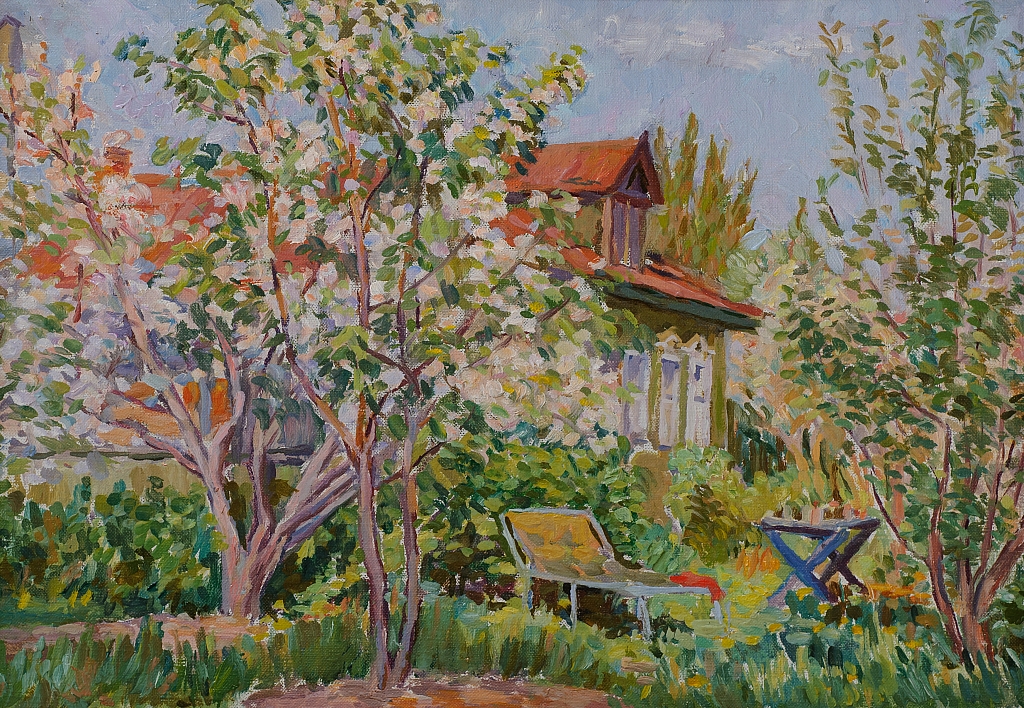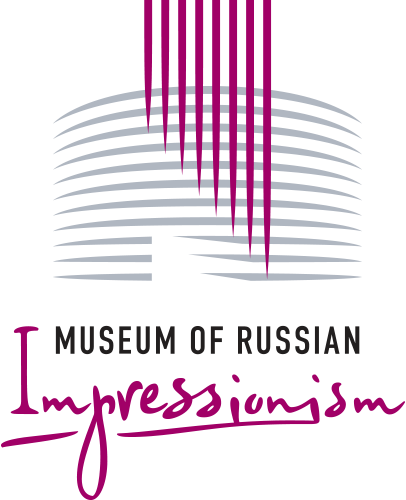
Yevgeny Oaks has immersed himself in a tranquil world of the small scale etude. In the manner of the French Barbizon school, he painted together with a group of fellow artists at Izmalkovo, a village near Moscow, and in hidden corners of the city where nature blossoms—his canvases are of winding alleys and quiet streets with receding tram rails, small courtyards shaded by tall spreading trees, or as in this painting, "Krasnaya Presnya", a wooden house with attic. All these are now gone from the Moscow we know today, and it’s hard to believe that the Presnaya district once looked as fresh as this—silent, idyllic, and scented with apple trees. Impressionism fascinated Oaks from an early age, starting with a present he received from his beloved cousin Vanda - a collection of essays about the work of Edouard Manet, Pierre-Auguste Renoir, Camille Pissarro and other French masters. By his own admission, the book would determine his fate. Oaks had devoted himself to the search for colour and the creation of an environment of tremulous light. Unfortunately, success came to the artist only after his death. Oaks was someone who could not force himself to lead a double life and adjust his skills to the requirements of his era. His works were removed from exhibitions because they did not correspond to Soviet ideology. Not wanting to waste his talent on creating socialism and communism, Oaks retreated into the shadows, where he could continue to paint his own special light.



